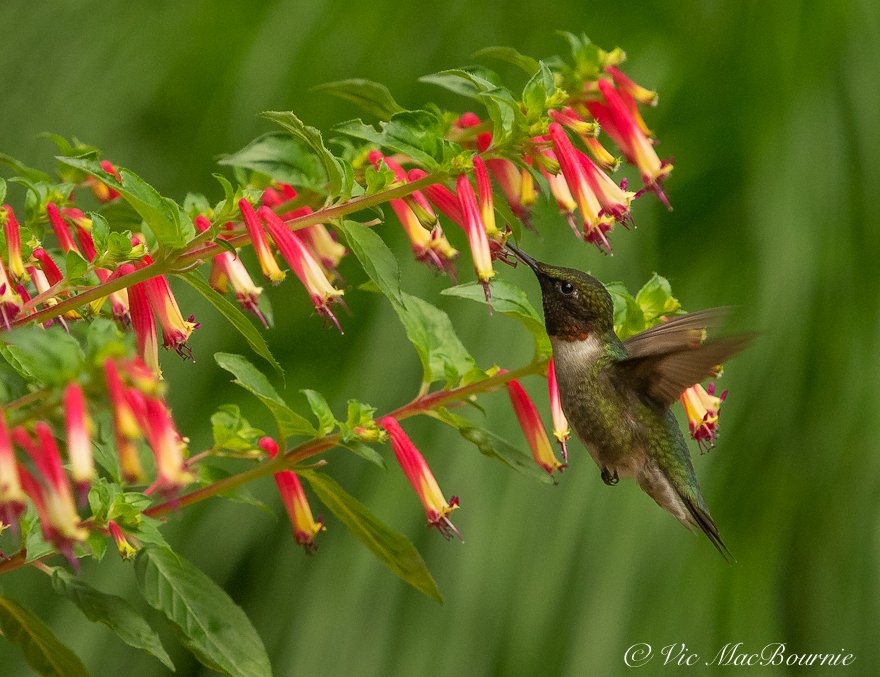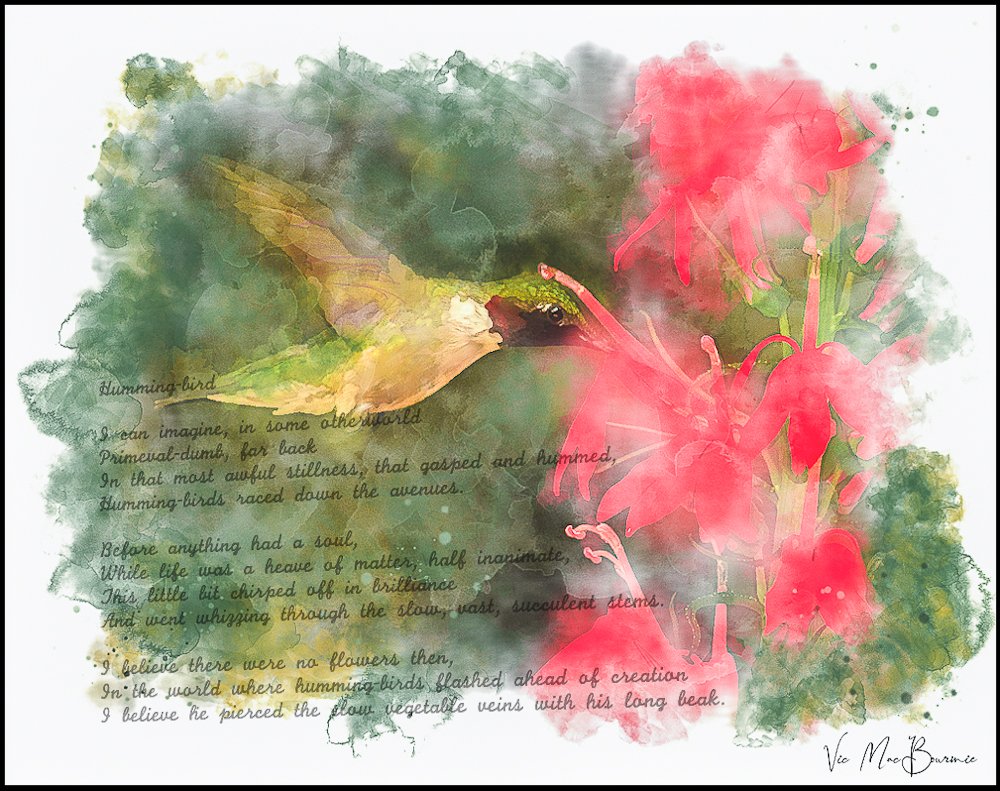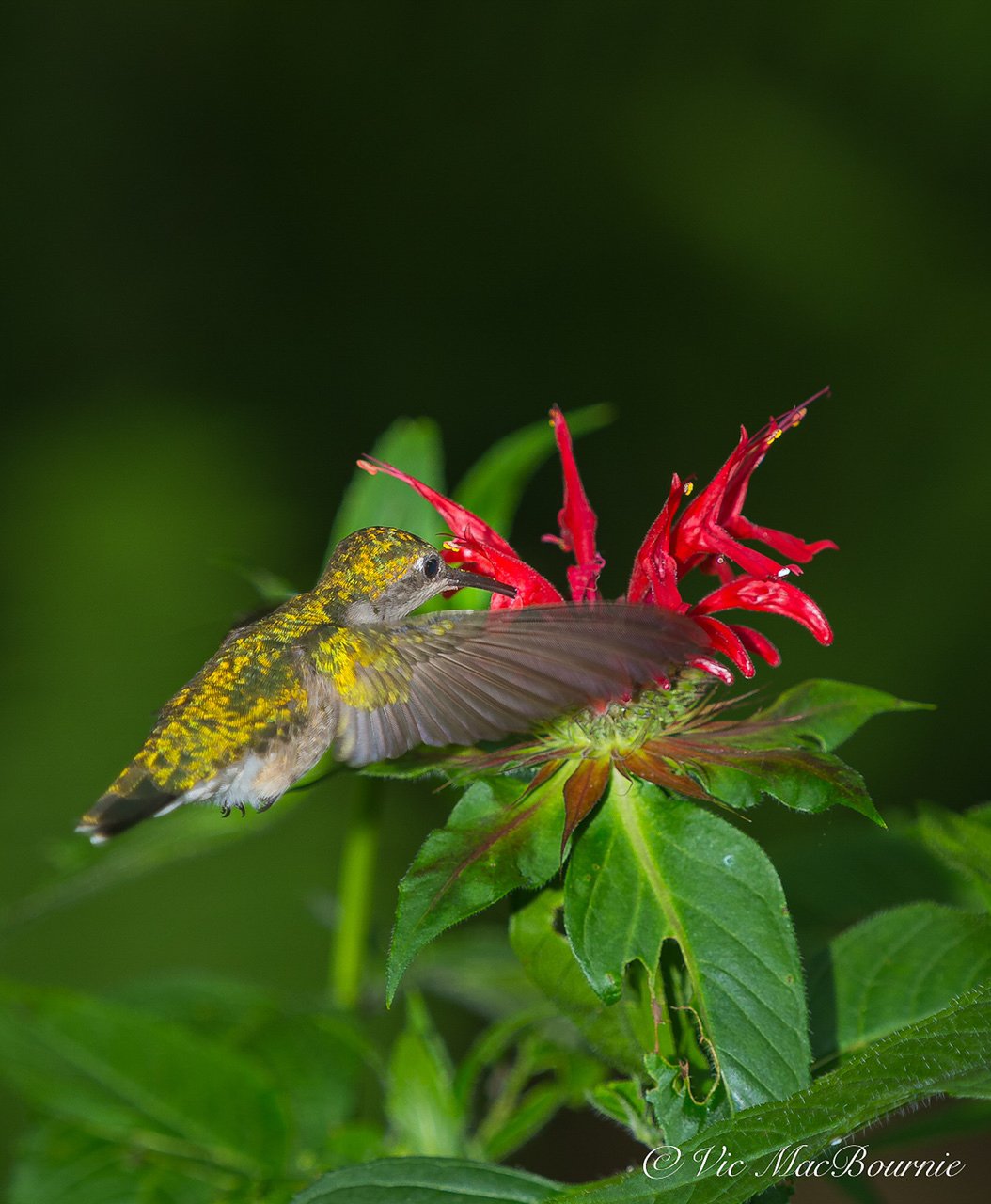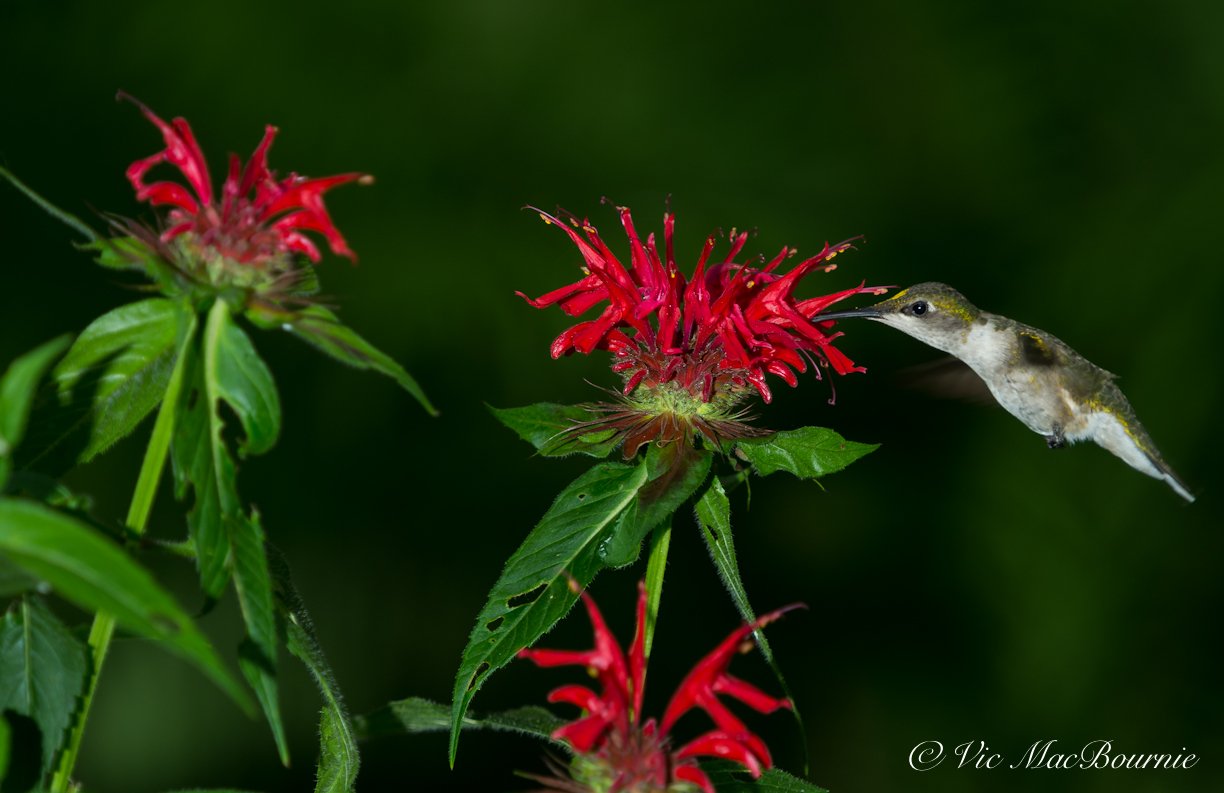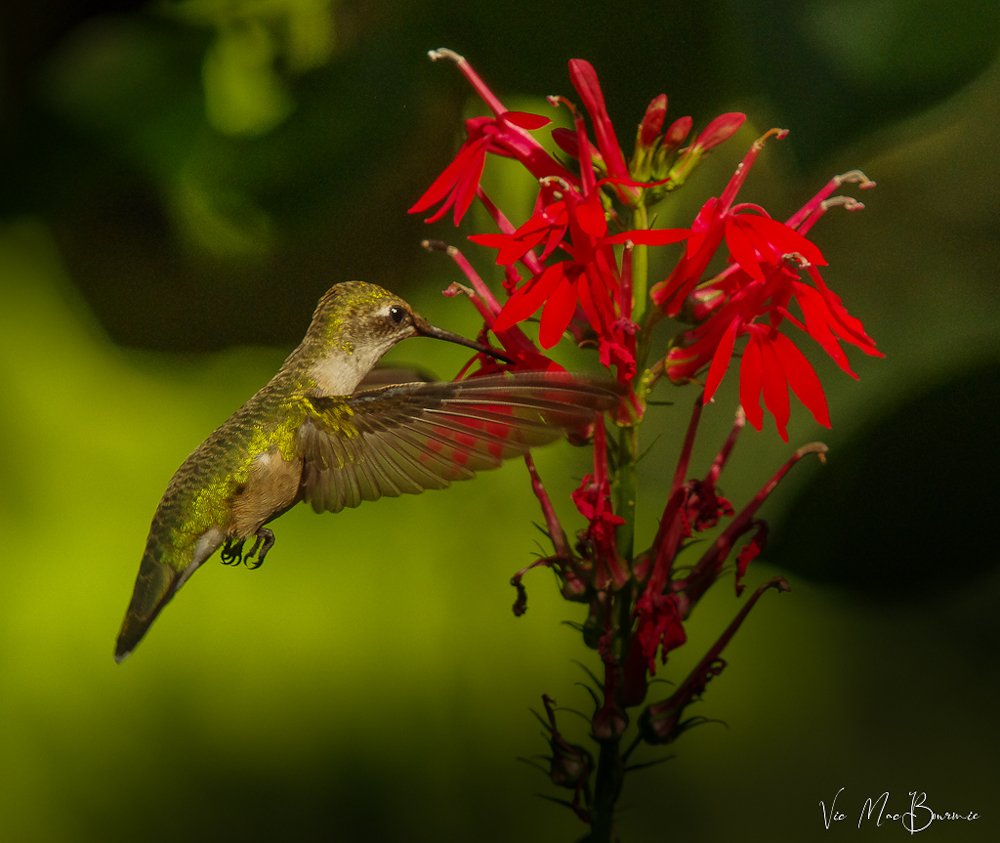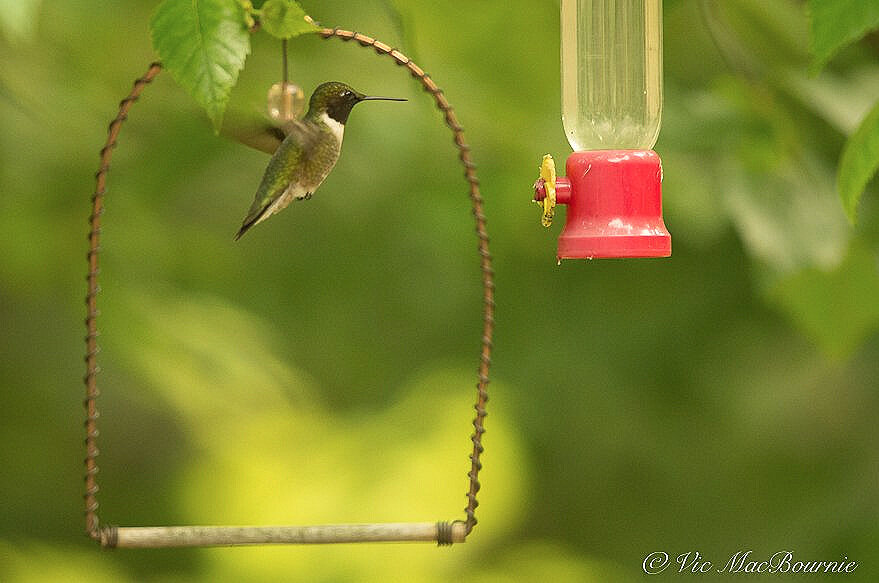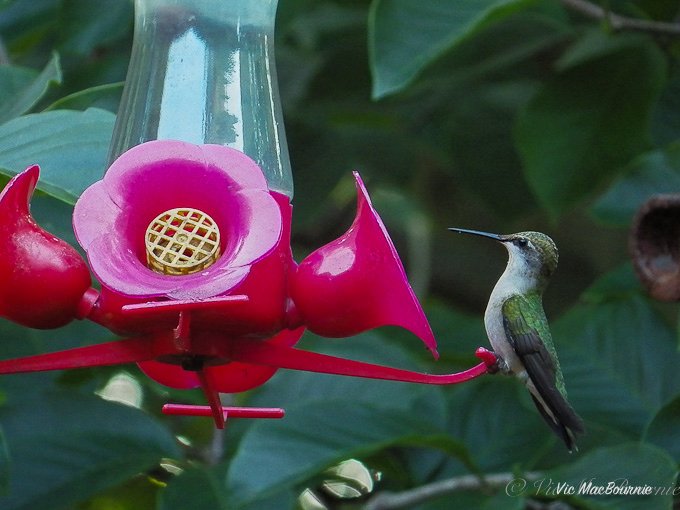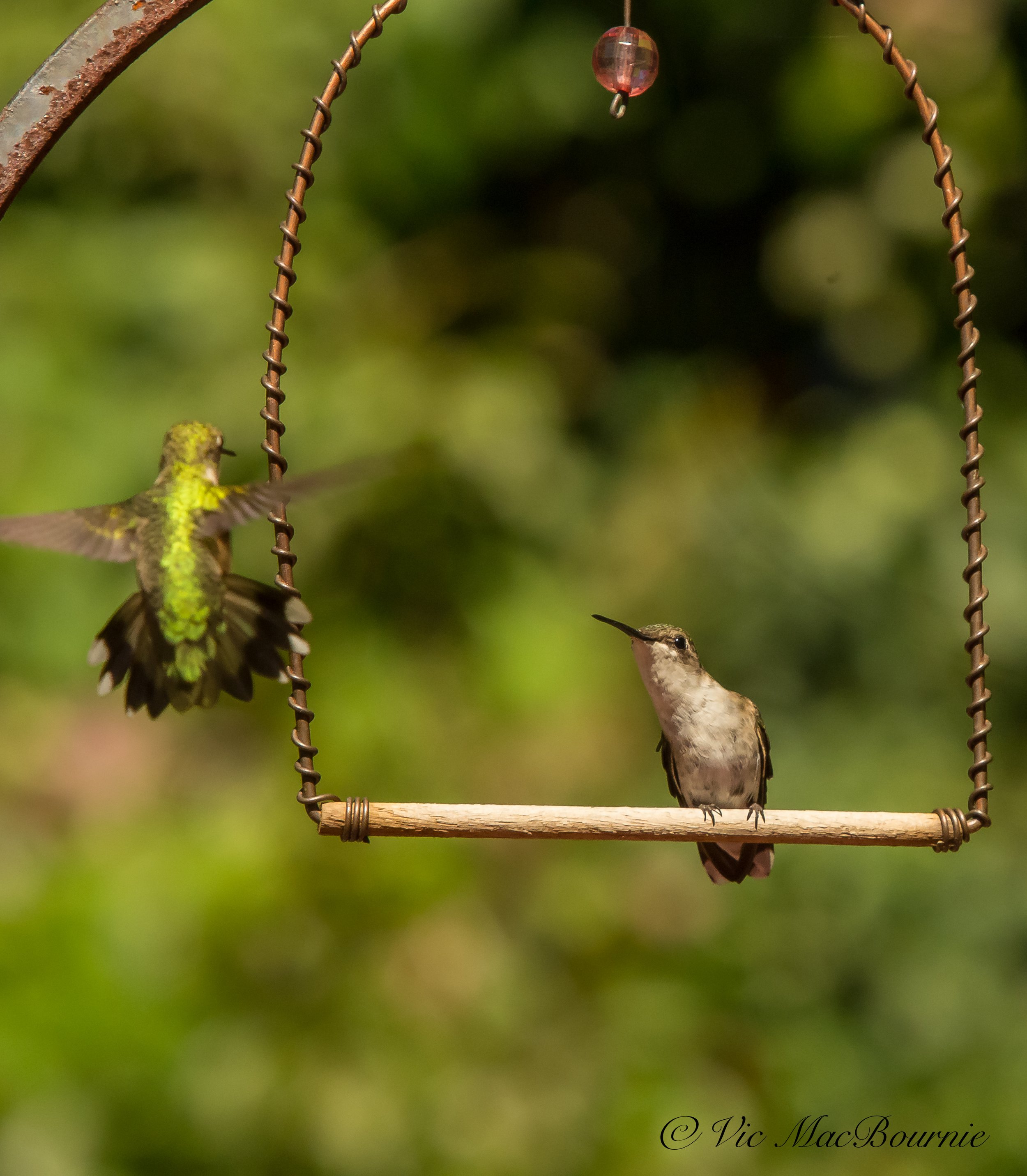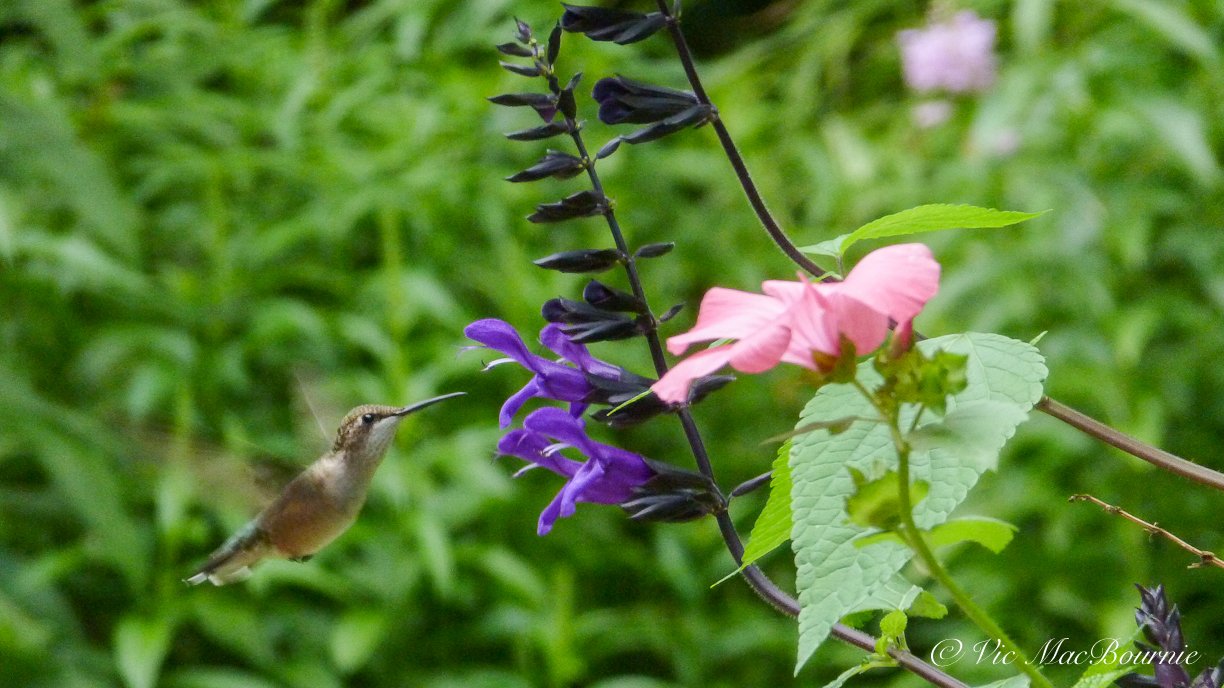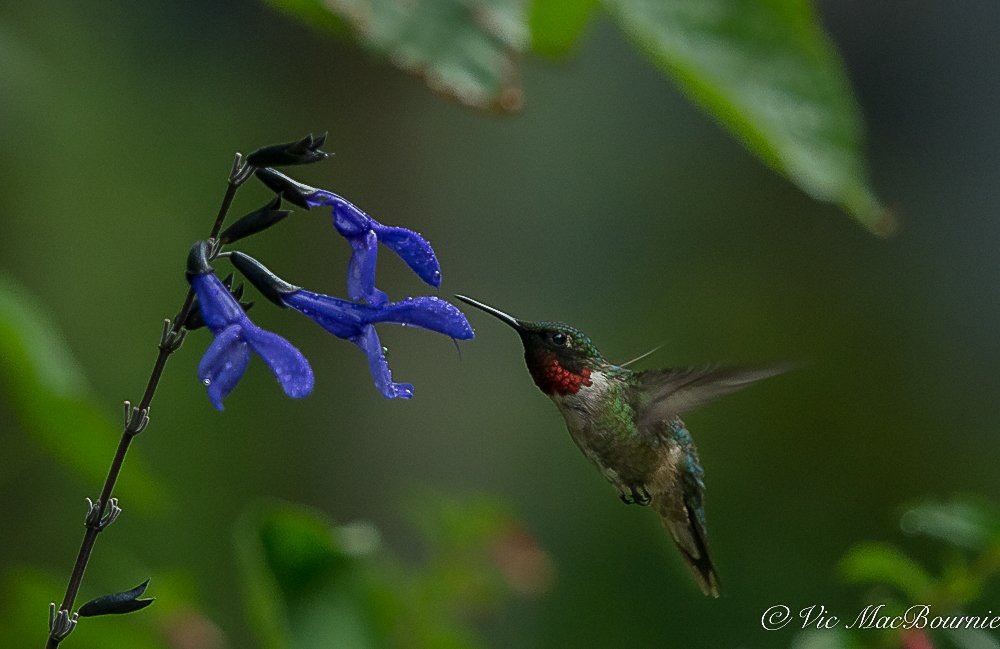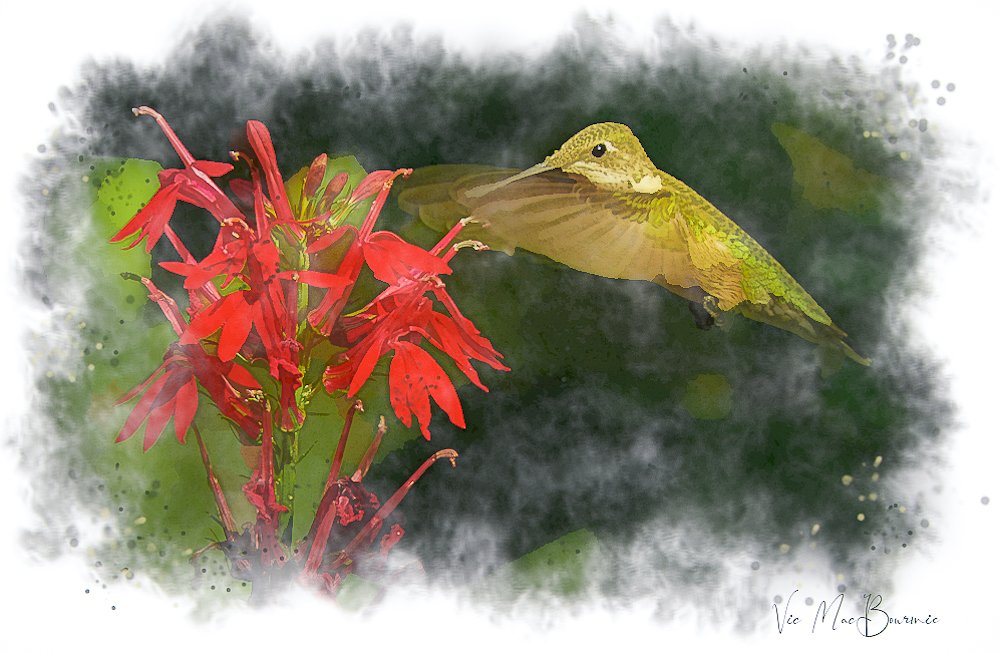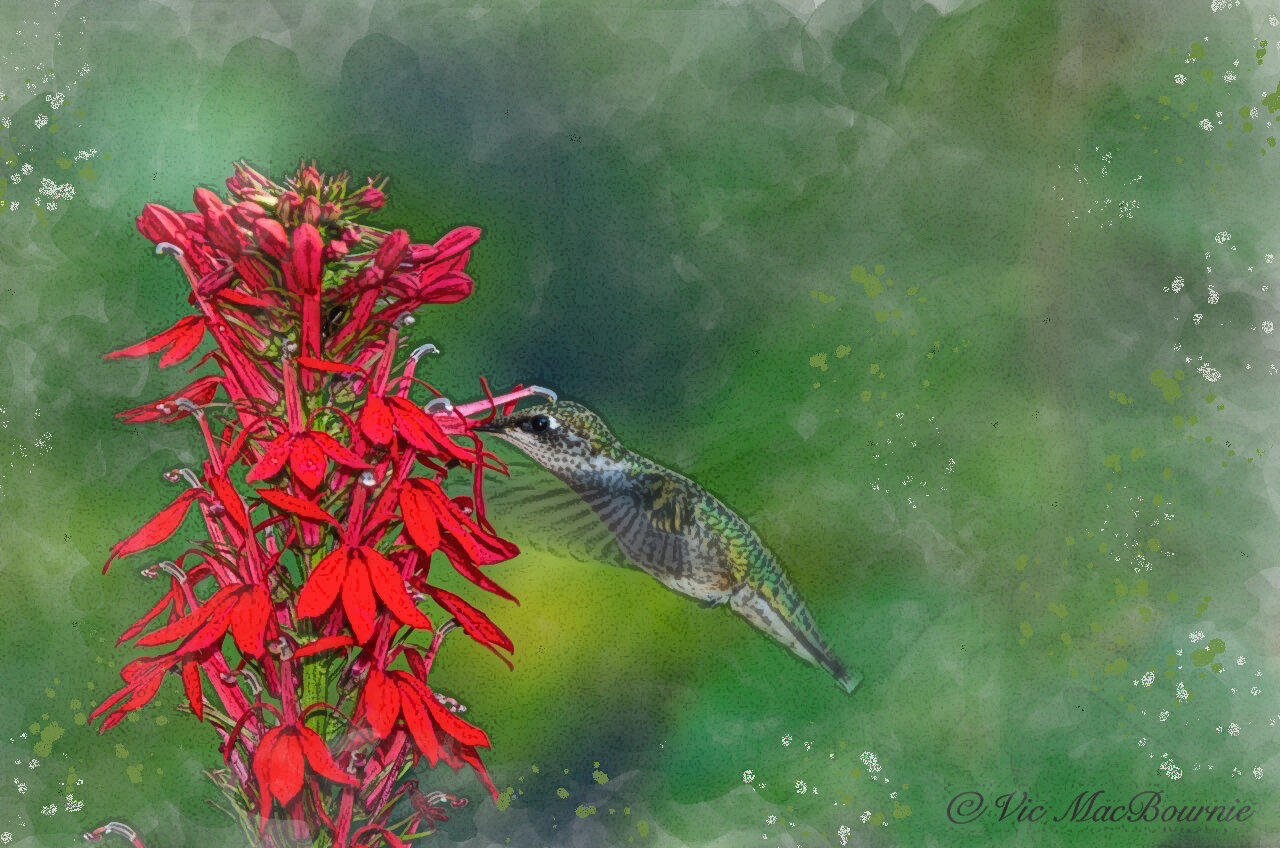Hummingbird images and digital creations
How to create memorable images of hummingbirds
Hummingbirds are the perfect models for backyard photographers.
Not only are they regular visitors to our gardens, their destinations are often very predictable, including the flowers they are most likely to go to and even where they enjoy perching for periods of time.
Despite all of this, their quick movements can make getting good images difficult.
For more on hummingbirds in the garden, check out the following posts:
• How to help Hummingbirds during migration
• Five tips to attract hummingbirds
• Create a hummingbird hangout in your yard
• Where do hummingbirds go in winter
The following are a combination of photographs and digital paintings created from photographs that I have taken or created over the past few years in our garden.
Trying to capture images of hummingbirds requires patience.
Setting the shutter speed fast enough to stop any movement is an important first step.
A good starting point is a shutter speed of at least 500th of a second, but that will not stop the movement of the wings. You will need a much faster shutter speed to stop the wing movement – something in the range of 1200 or higher. Unfortunately, increasing the shutter speed usually means your ISO needs to be up extremely high. This, of course, can lead to grainy or noisy images.
Using flash is an excellent way not only to help add some pop to the image, but also stop any motion. The flash also adds a highlight in the bird’s eye, which helps to give the bird some life.
Planting flowers – both annual and perennial – that hummingbirds are particularly attracted to provides excellent opportunities to capture these tiny birds.
Although the above image looks like it may have been photographed using a flash, it was actually taken later in the morning in direct sunlight when the plant was in full sunshine but the background was still in shade.
A long telephoto lens was in most of these images including the above image where I used a 300mm F4.5 lens (420mm equivalent). This is an ideal lens to photograph these tiny birds from a respectable distance.
Although photographers strive to capture hummingbirds in their natural environments, including a feeder can result in some interesting images. In the hummingbird image below, I tried to capture both the feeder and the hummingbird swing in the same image.
Capturing hummingbirds with smaller point-and-shoot cameras, such as those made by Canon, Panasonic’s Lumix LX line of cameras, or their ZS line of high-end point and shoot cameras and Fuji can be challenging, but with a little extra effort and patience, it’s possible to get some nice environmental images such as the ones below. With a little patience and practise you can learn to get the most out of your compact camera.
This hummingbird posed on this perch for a period of time allowing me to capture it with a simple point-and-shoot camera.
Hummingbirds will often show aggressive territorial displays especially later in the season.
Hummingbird working the salvia. The 300mm f4.5 lens provides a beautifully soft background to the image.
This image shows how hummingbirds and orioles both often share nectar at feeders.
A hummingbird eyes a cardinal flower on approach.
One of my favourite pastimes, especially in winter, is to take some of my favourite photographs and use them to create artistic impressions of the images. Below are just a few of my digital paintings which are created using a number of different computer programs as well as a tablet that allows you to paint with a pencil tool similar to a hand held paintbrush. Click on the link to learn more about turning photographs into digital works of art.
Another digital painting of a hummingbird from one of my original photographs.
Creating digital paintings from original photographs can be an extremely rewarding experience, especially over the winter months, when snow makes photographing birds more difficult.

